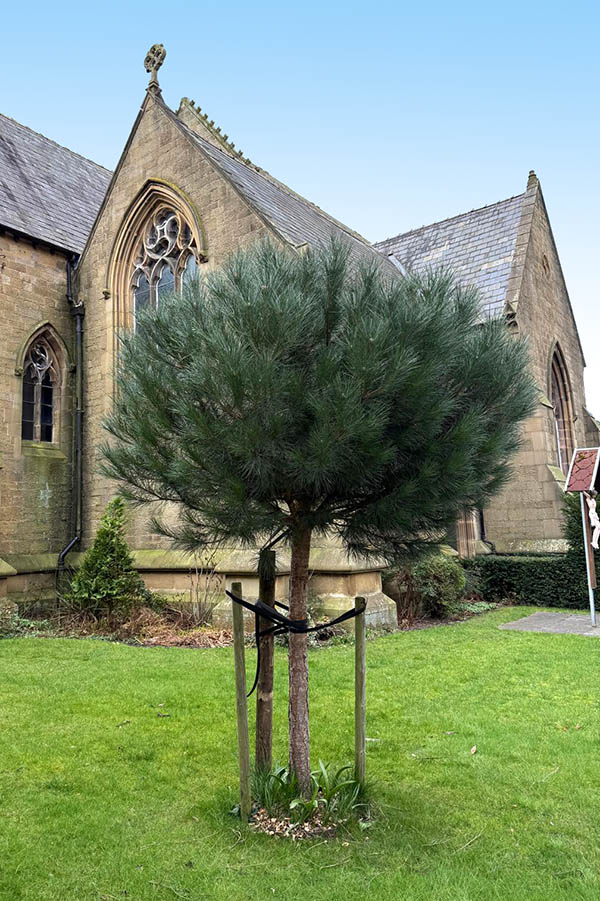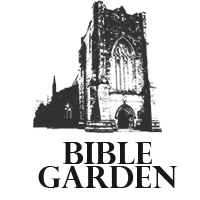Stone Pine (Pinus pinea)
Map Position: 15There are about 126 species of pine. The pine is widely used: for example, its wood is used for building and construction, carpentry, its resin is a source of turpentine, it is used to ferment Retsina wine, the pine kernels are edible.
Pine species that grow in the Holy Land are among others
- the Allepo Pine, which is not hardy and will not survive in our climate)
- the Brutian Pine, which prefers Mediterranean climate and
- the Pinus Pinea, which most scholars believe to be the Biblical Pine and was therefore chosen for our Bible Garden.

Biblical
Pine trees are often grouped– and confused - with other conifers such as cypress, fir, tamarisk and so on. Therefore, in the German Catholic Bible, Luther’s Bible, King James Version etc. you will find other tree names in the relevant chapters.
Solomon describes the beauty of the house where he lives with his love: “Our couch is green; the beams of our house are cedar; our rafters are pine” (Song of Solomon 1.17).
When the Jews returned from exile the Lord promised to help them by supplying them with precious trees: “I will put in the wilderness the cedar, the acacia, the myrtle, and the olive. I will set in the desert the cypress, the plane and the pine together” (Isaiah 41.19).
Isaiah describes the beauty of future Zion and the wonderful building materials for His place and how the Lord cares for His people: “The glory of Lebanon shall come to you, the cypress, the plane, and the pine, to beautify the place of my sanctuary, and I will make the place of my feet glorious” (Isaiah 60.13).
Ezekiel laments the fall of the rich town of Tyre. He describes how wonderful it once was, and compares it to a perfectly build ship, that will, however, vanish:
“Of oaks of Bashan they made your oars; they made your deck of pines from the coasts of Cyprus inlaid with ivory” (Ezekiel 27.6).
